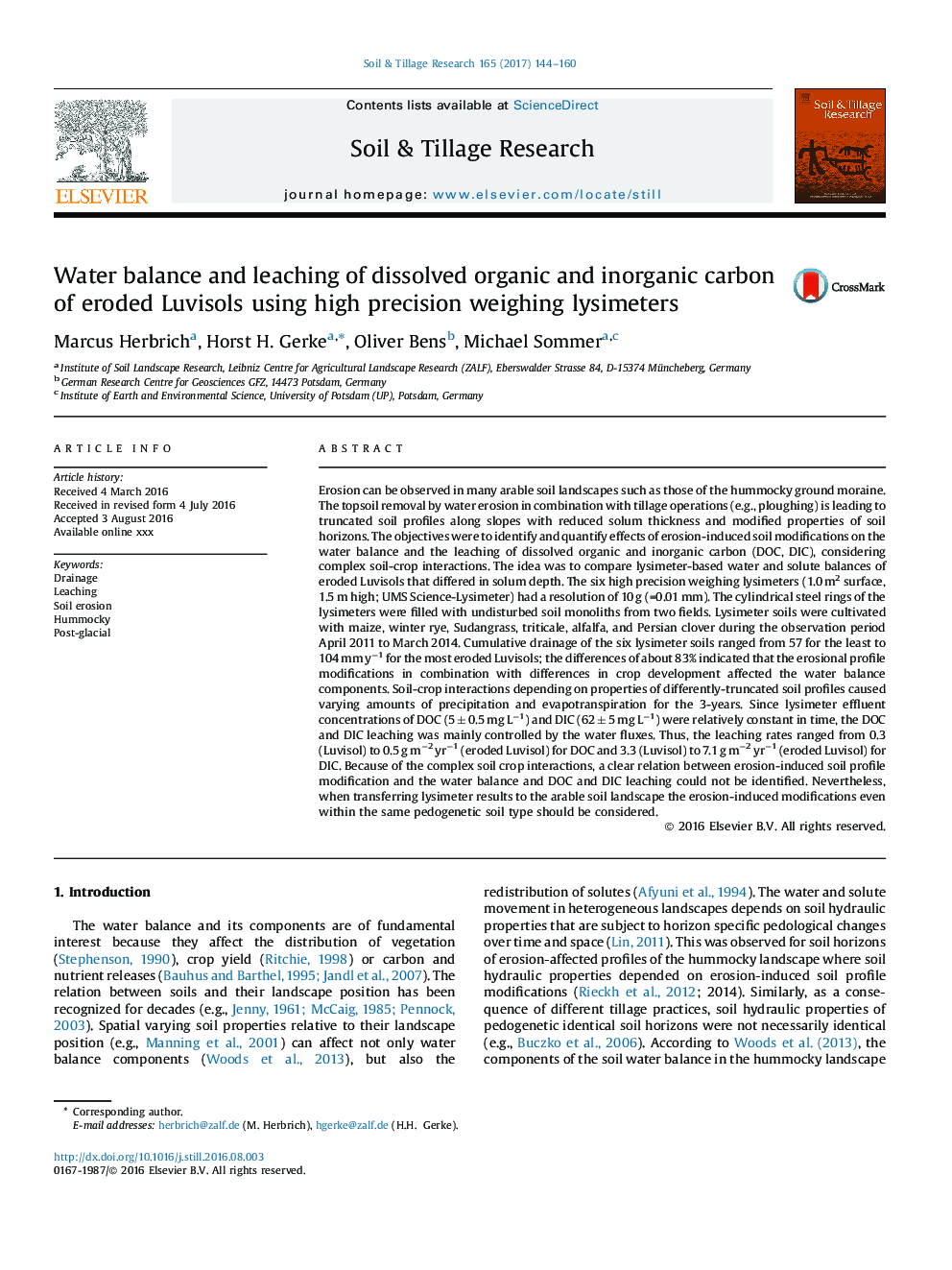| Article ID | Journal | Published Year | Pages | File Type |
|---|---|---|---|---|
| 6773304 | Soil and Tillage Research | 2017 | 17 Pages |
Abstract
Erosion can be observed in many arable soil landscapes such as those of the hummocky ground moraine. The topsoil removal by water erosion in combination with tillage operations (e.g., ploughing) is leading to truncated soil profiles along slopes with reduced solum thickness and modified properties of soil horizons. The objectives were to identify and quantify effects of erosion-induced soil modifications on the water balance and the leaching of dissolved organic and inorganic carbon (DOC, DIC), considering complex soil-crop interactions. The idea was to compare lysimeter-based water and solute balances of eroded Luvisols that differed in solum depth. The six high precision weighing lysimeters (1.0 m2 surface, 1.5 m high; UMS Science-Lysimeter) had a resolution of 10 g (=0.01 mm). The cylindrical steel rings of the lysimeters were filled with undisturbed soil monoliths from two fields. Lysimeter soils were cultivated with maize, winter rye, Sudangrass, triticale, alfalfa, and Persian clover during the observation period April 2011 to March 2014. Cumulative drainage of the six lysimeter soils ranged from 57 for the least to 104 mm yâ1 for the most eroded Luvisols; the differences of about 83% indicated that the erosional profile modifications in combination with differences in crop development affected the water balance components. Soil-crop interactions depending on properties of differently-truncated soil profiles caused varying amounts of precipitation and evapotranspiration for the 3-years. Since lysimeter effluent concentrations of DOC (5 ± 0.5 mg Lâ1) and DIC (62 ± 5 mg Lâ1) were relatively constant in time, the DOC and DIC leaching was mainly controlled by the water fluxes. Thus, the leaching rates ranged from 0.3 (Luvisol) to 0.5 g mâ2 yrâ1 (eroded Luvisol) for DOC and 3.3 (Luvisol) to 7.1 g mâ2 yrâ1 (eroded Luvisol) for DIC. Because of the complex soil crop interactions, a clear relation between erosion-induced soil profile modification and the water balance and DOC and DIC leaching could not be identified. Nevertheless, when transferring lysimeter results to the arable soil landscape the erosion-induced modifications even within the same pedogenetic soil type should be considered.
Related Topics
Physical Sciences and Engineering
Energy
Renewable Energy, Sustainability and the Environment
Authors
Marcus Herbrich, Horst H. Gerke, Oliver Bens, Michael Sommer,
